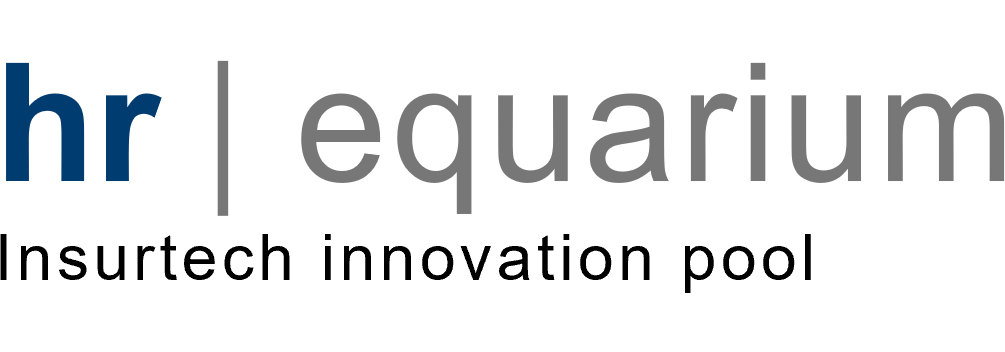“Now’s the time to innovate and enter a new era for life and health insurance”
Claude Chèvre, Member of the Executive Board at Hannover Re, looks at global trends across life and health insurance and how technology is shaping the insurance marketplace.
What impact has Covid-19 had on insurance? How will the industry change as we move forward into 2022 and beyond?
Although it’s often said that insurance has been slower to enter the digital age compared with other industries, we’re now hearing a different story. Covid-19 has accelerated digitalisation across every industry and sector, and insurance is no exception. Above all, the challenge of Covid-19 has added momentum to technology developments across the life and health marketplace.
The pandemic has driven up demand for life and health products and prompted insurers to revise their operating models and strengthen distribution and customer focus. Going forward, there will be even more emphasis on actionable data combined with advanced risk management techniques and analytics, while hyper-personalisation and technology partnerships will be strong agents of change. Now’s the time to innovate and enter a new era for life and health insurance.

Why is hyper-personalisation so important today?
Big tech companies have demonstrated the value of hyper-personalisation, and consumers now expect service providers to understand their personal needs and wishes in the same way that digital leaders do. Customer experience is the playing field where insurers win loyalty and build long-term relationships. Better data and sophisticated analytics enable insurers to offer targeted health management services and get closer to consumers who are showing a growing interest in technology to monitor health and encourage healthy lifestyles.
What effect is technology having on pricing?
Thanks to connected devices and better data and analytics, insurers can provide continuous underwriting. That means harnessing real-time information for ongoing and more precise risk assessment and pricing. Using richer, personalised data about lifestyles, insurers can adjust premiums and reward healthy behaviour – so it’s a win-win strategy. Moreover, through connected devices, insurers can play an important role in claims prevention.

How is wearable technology impacting the life and health marketplace?
A wearable is a prime example of a connected device. More particularly, it’s at the heart of the growing connected wellness movement. Wearables have sensors that collect information about daily activities, and the insights they provide into people’s lives and health have many potential use cases for insurance.
Examples include accelerated underwriting, which enables people with good health data to obtain cover without a medical check-up; continuous underwriting to cover evolving health risks; and better customer engagement to promote healthy lifestyles. However, there are also challenges. Privacy and the reliability and security of data must be carefully observed. People need to feel comfortable about sharing their personal details, but as wearables become more refined and confidence about data-sharing grows, it will lead to more accurate underwriting and encourage healthier behaviours.
“Insurers and technology providers are teaming up to help people lead longer and healthier lives.”
How important are technology partnerships?
Insurers are increasingly collaborating with, and funding, scientific and technology innovators who can help them gather and analyse data using artificial intelligence, machine learning, virtual reality and other advanced techniques. Personalisation, omnichannel customer experience and connected wellness are just some of the benefits, while opportunities are opening up for technologies that cater for under-protected or under-served markets.
Technology offers new ways to understand and manage risk without requiring the physical check-ups that have long been a standard part of life and health insurance.
New technologies and the partnerships they inspire help insurers to add value and move beyond just risk transfer. The focus now is on life enablement as well as life protection, with insurers and technology providers teaming up and combining their skills to help people lead longer and healthier lives.
How is technology affecting the insurance workforce?
The insurance industry is rarely applauded for its creativity and versatility. There is a tendency to employ people who all share the same characteristics and backgrounds. But things are changing, not least thanks to technology. With many activities now being automated, roles that involve repetitive manual processing will gradually disappear.
There will be new and more rewarding job opportunities for insurance personnel. As automation increases, particularly for high-volume and low-complexity risks, there will also be more time to focus on the human side of insurance, where interpersonal and social skills are highly valued.
"Insurance will need to become more attractive for digital talents who would normally be drawn to other industries."
Are new skillsets required?
As insurance becomes more data-driven and digitally enabled, workers with digital skillsets will become more important – a trend accelerated by Covid-19. Complementing the skillsets found in insurtechs, digital experts and technology talents will be in great demand, and the traditional workforce composition will change. Insurance will need to become more attractive for digital talents who would normally be drawn to other industries. We are sure to see more data scientists, knowledge engineers, application developers and other specialists in the insurance industry’s future recruitment drives.
Blog posts
“We need a broader and more responsible role for insurance as a social and economic moderniser.”
User questions
Answered questions
Unanswered questions
Views: 21832
Downloads: 0
| 100 % | |
| 0 % | |
| 0 % | |
| 0 % | |
| 0 % |
Page is favored by 0 user.
Contact inquiries: 0


